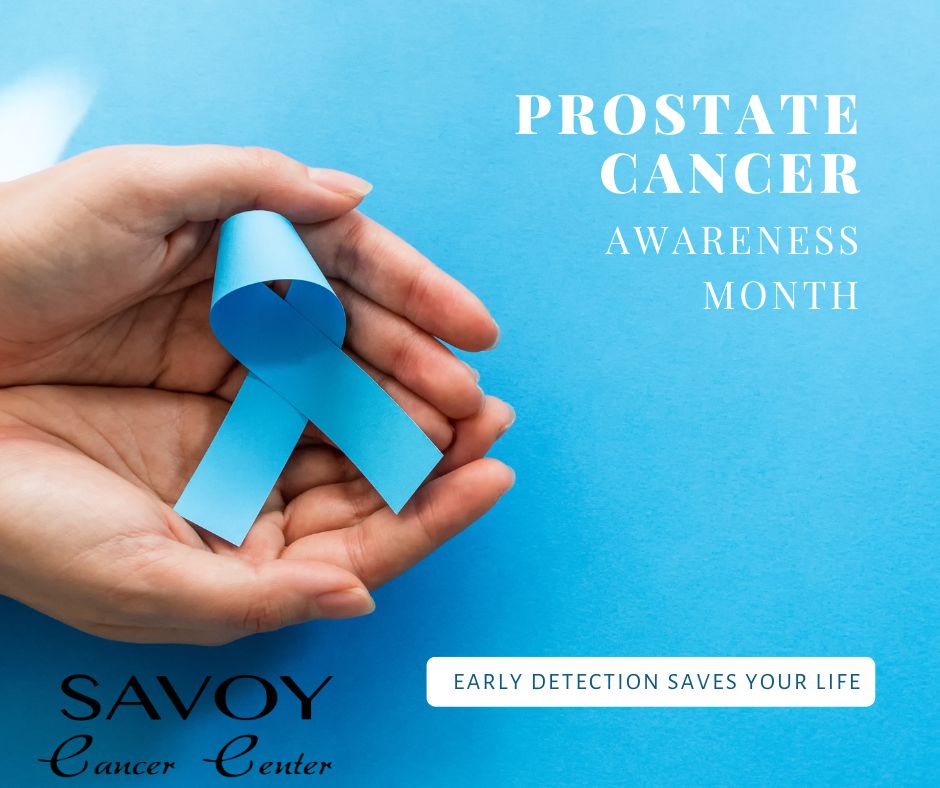
Take a moment to read Dr. Lawrence Menache’s, Radiation oncologist at Savoy Cancer Center’s, article on Prostate Cancer.
September is Prostate Cancer Awareness Month. This diagnosis is socially different from breast cancer in that you won’t find a bunch of light blue ribbons around town or men wearing light blue clothes if they have been diagnosed with prostate cancer. What is similar to breast cancer is that there is quite a lot of research going on in regards to diagnosis and treatment. The good news is that many men with prostate cancer will most likely die of something else and not their prostate cancer.
In 2022 there are an estimated 250,000 new diagnosed prostate cases but only 34,00 deaths from prostate cancer. Louisiana: 4140 cases and 740 deaths. Autopsy studies reveal that many men had some amount of prostate cancer that went undetected and did not cause deaths. Yet it is the number one cancer cause of death in the US for men. For reasons that are presently not clear, Non-Hispanic Black men have the highest incidence of prostate cancer in the world. Other risk factors include increasing age, being overweight, family history of the disease, as well as some genetic conditions including carrying the “breast cancer” gene, BRCA 1&2.
There has been some controversy in regards to the use of PSA (a simple blood test) screening in asymptomatic men. The American Cancer Society does recommend having a conversation with your primary care provider at 50 for moderate risk patients with a 10-year life expectancy. Black men should start at 45 especially if there is a family history and even earlier if the BRCA gene runs in the family. There s a simple oral swab test that can be performed if you qualify to detect the BRCA gene.
While most men do not have any symptoms that could alert them to early disease, more advanced stages may be associated with urinary difficulties, blood in the urine, or pain with urination. More advanced disease may be associated with boney pain.
Just because you have been diagnosed with the disease you do not necessarily need treatment. Low grade and small amounts of tumor in the prostate may actually be watched with repeat PSAs and biopsies.
If you are diagnosed with the disease that does require treatment then surgery for men 70 and under with a 10-year survival expectancy is the standard of care in the United States. After 70, the patient may still get surgery but there are other options.
Radiotherapy is often used in men over 70, for any who may have been found to have an aggressive tumor at surgery or down the road after surgery if the PSA starts to climb. There is also a new type of scan, PSMA -scan which can be useful in determining if the cancer has spread or returned.
For patients with more advanced disease hormonal and chemotherapy as well as immunotherapy may also be added to their treatment regimen. It is in this arena that most research is being done today!


